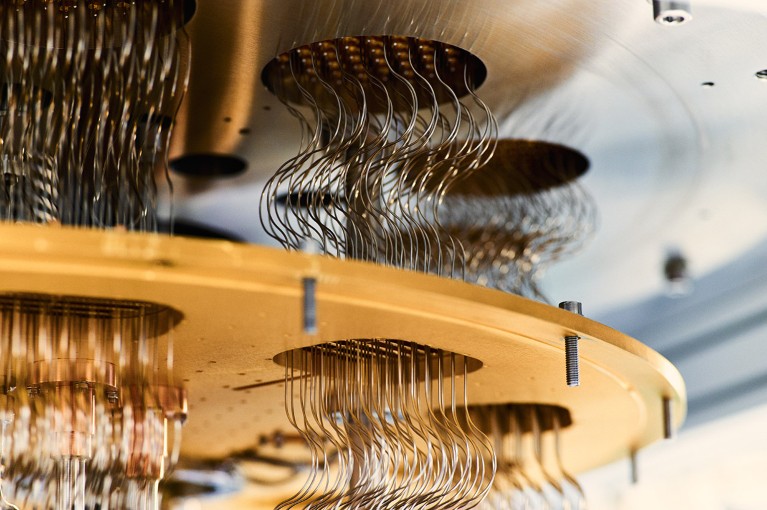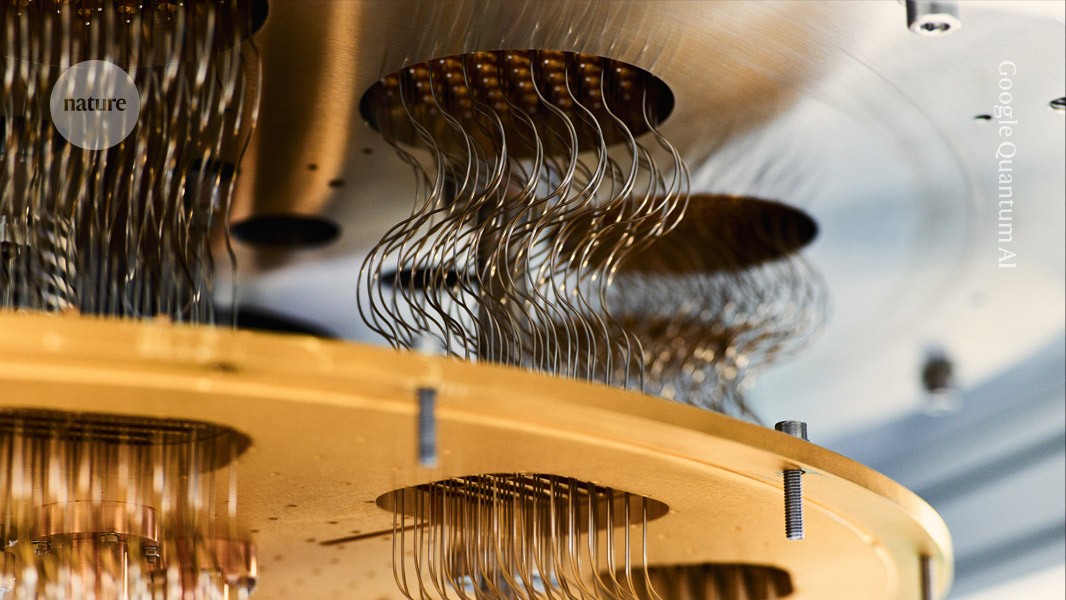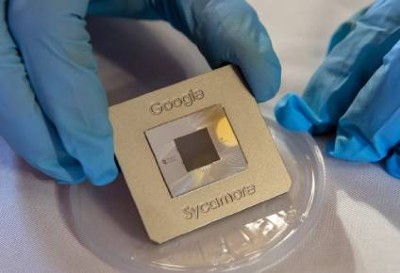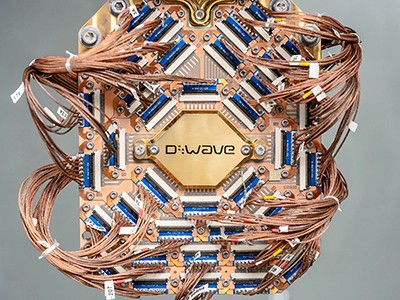
Part of a cryostat in Google’s quantum-computing facility.Credit: Google Quantum AI
Google researchers have made a fresh claim of quantum advantage — the ability of quantum computers to radically speed up calculations compared with their classical counterparts.
This is not the company’s first such claim. But the researchers say their latest algorithm — dubbed quantum echoes — has the potential to solve scientific problems, including deriving the structures of molecules. It could also, in theory, be replicated on another quantum computer.
“This algorithm offers the opportunity for real-world applications,” said Hartmut Neven, who heads Google’s quantum-computing lab, in Santa Barbara, California, at a briefing for journalists ahead of the announcement. The firm is optimistic that in five years there will be practical uses for quantum computers, he added.
Google uncovers how quantum computers can beat today’s best supercomputers
But some researchers are cautious of the claim of quantum advantage, published in Nature on 22 October1. “The burden of proof should be high,” says Dries Sels, a quantum physicist at New York University in New York City. And although the paper does a “serious job” of testing various classical algorithms, there is no proof that an efficient one doesn’t exist. “Personally I don’t think that’s enough to make such a big claim,” he says.
Others say that the promise of practical use so soon is premature. The technical advance is impressive, says James Whitfield, a quantum physicist at Dartmouth College in Hanover, New Hampshire, but it is “a bit of a stretch to think how this is going to suddenly solve some economically viable problem”.
Google researchers and their collaborators fleshed out how they could apply the algorithm to simple molecules in a preprint study that they have submitted to arXiv. They were able to predict certain features of the molecules’ structures using quantum simulations, and confirm their findings with nuclear magnetic resonance (NMR) measurements. But so far, they can only apply the method to molecules that can already be efficiently simulated classically, such as the aromatic liquid toluene.
Applying the quantum echoes algorithm to more complex systems will require less noisy hardware or methods to correct for errors that are still being worked on, said Tom O’Brien, a research scientist at Google Quantum AI in Munich, Germany, at the briefing.
Echoing qubits
The demonstrations used Google’s Willow chip, which harnesses 105 tiny superconducting circuits to store information as quantum bits, or qubits — the quantum equivalent of classical bits of information.
Fresh ‘quantum advantage’ claim made by computing firm D-Wave
Google’s algorithm is able to detect subtle quantum links between distant parts of the computer, which otherwise get scrambled and lost owing to interactions between the device’s many quantum parts. The team likened their method to mapping a cave using echoes; it involves running a series of operations, perturbing a qubit, then running the operations in reverse. Measurements reveal traces of the single qubit’s interactions throughout the system.
To apply the algorithm to molecules, researchers make qubits simulate ‘spins’ of atomic nuclei, the quantum property that makes each nucleus act like a tiny bar magnet. By measuring how these spins interact magnetically, NMR reveals a molecule’s structure, but the technique fails when the nuclei are too far apart. By simulating spins using qubits, the quantum echoes algorithm can tease out long-distance interactions to give more structural information than is possible using NMR alone, said O’Brien.




